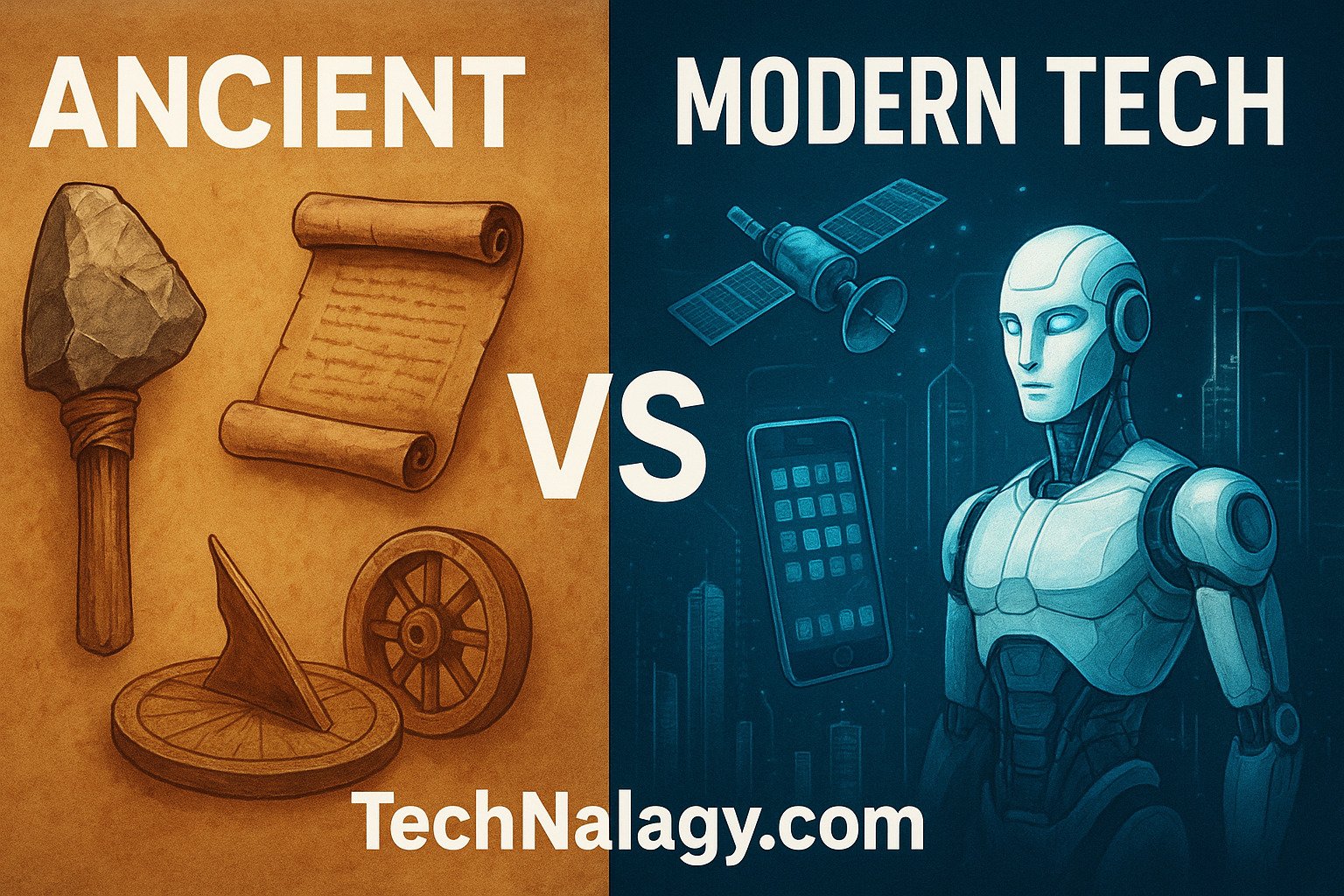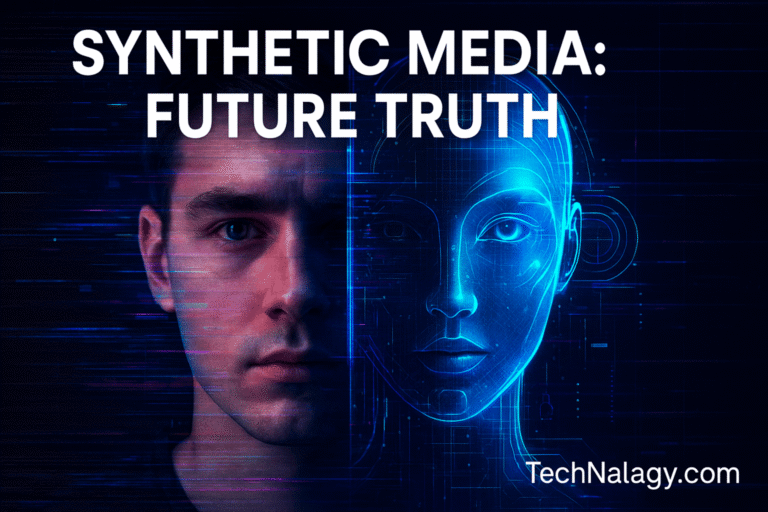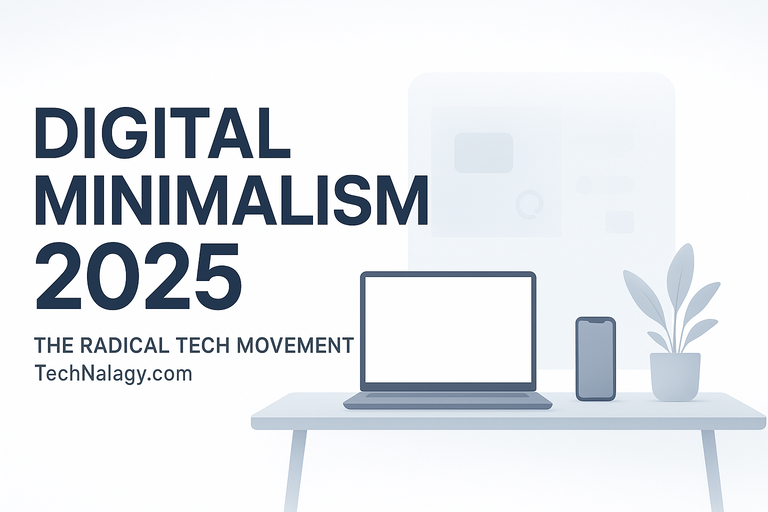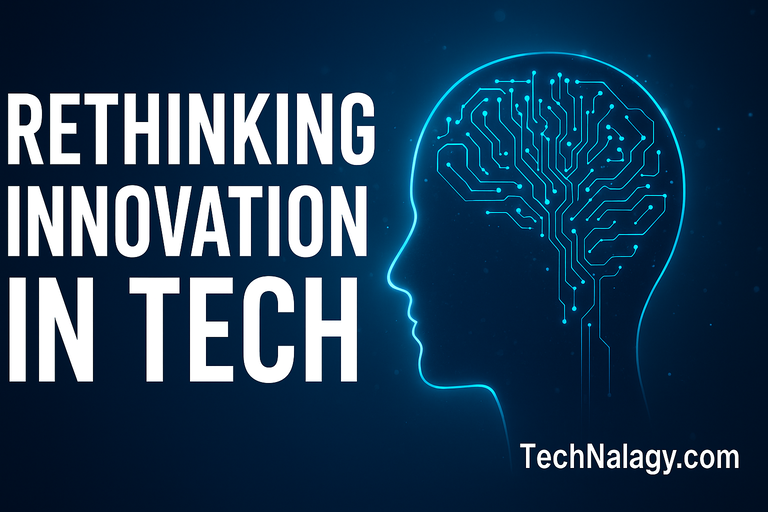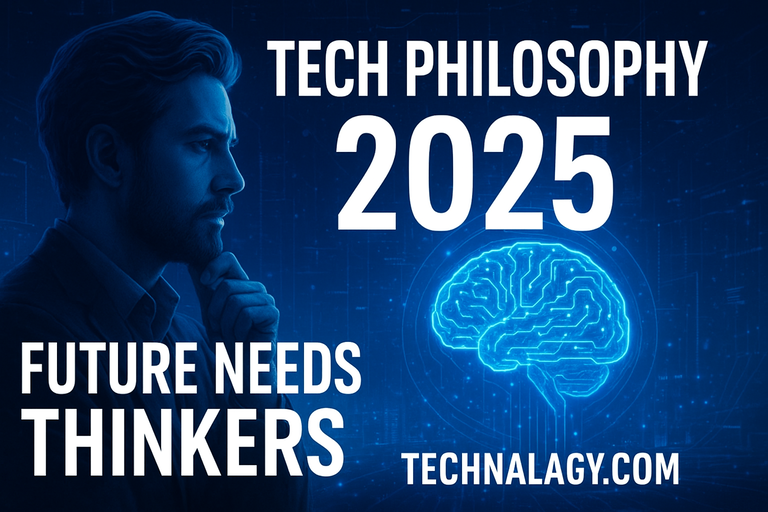10 Shocking Differences Between Ancient and Modern Technology Explained
Technology has always been at the heart of human progress. From the first stone tools used by early humans to today’s AI-powered devices, each step forward has shaped civilizations, economies, and societies in unimaginable ways. Understanding the Differences Between Ancient and Modern Technology not only shows us how far we’ve come but also helps us imagine what the future may hold.
This in-depth guide explores 10 shocking comparisons that highlight the massive gap between ancient and modern innovations — and why these differences matter today.
Table of Contents
1. Tools and Materials – From Stone to Silicon
Ancient Tools and Raw Materials
In ancient times, human survival depended on basic tools carved from stone, wood, and metals like bronze and iron. These tools were primarily designed for hunting, farming, and building shelter. Materials were limited to what nature provided, and innovation was slow and localized.
Modern Tools and Advanced Materials
Today, materials science has unlocked possibilities that ancient civilizations could never have imagined. We now use silicon chips for computing, carbon fiber for aerospace engineering, and nanomaterials for medicine and electronics. Modern tools are not just functional; they are optimized for efficiency, speed, and mass production. This contrast illustrates the incredible leap from survival-based tools to advanced, knowledge-driven technology.
2. Communication – From Symbols to Smartphones
Ancient Communication Systems
For centuries, communication was limited to cave paintings, hieroglyphics, smoke signals, and handwritten letters. Messages traveled slowly, often taking months or even years to reach their destination.
Modern Communication Revolution
Today, we can send a message across the world in milliseconds. The internet, smartphones, and AI-powered tools have created a global village where knowledge flows instantly. As explored in AI in Everyday Life, artificial intelligence now even translates languages in real-time, making communication seamless.
3. Transportation – From Foot Travel to Space Travel
Ancient Methods
Ancient people relied on walking, horseback riding, carts, and simple boats powered by oars or sails. Journeys were long, dangerous, and exhausting.
Modern Innovations
Now, cars, airplanes, bullet trains, and even reusable rockets make global and interplanetary travel a reality. Space exploration, once the domain of myths, is now a commercial industry. The ability to cover vast distances quickly is one of the most dramatic Differences Between Ancient and Modern Technology.
4. Medicine – From Herbal Remedies to AI-Driven Healthcare
Ancient Healing Practices
Early civilizations used herbs, natural minerals, and spiritual rituals to heal illnesses. While some remedies were effective, much was based on superstition and lacked scientific foundation.
Modern Medical Technology
Modern healthcare leverages biotechnology, advanced imaging, and AI-driven diagnostics. From robotic surgeries to telemedicine, technology saves millions of lives daily. For a deeper look at how medicine evolved, check out Britannica’s History of Medicine.
5. Education – From Oral Tradition to Digital Classrooms
Ancient Learning Systems
Knowledge was passed orally from elders or teachers, often through stories, rituals, and manuscripts. Formal learning was limited to privileged groups like priests, monks, or scholars.
Modern Digital Learning
Education today is borderless. Online platforms, AI tutors, and immersive VR classrooms allow students anywhere in the world to access quality education. Emerging Tech Trends 2025 highlights how digital learning is reshaping access to knowledge.
6. Warfare – From Spears to Cyber Weapons
Ancient Weapons and Strategies
Ancient warfare relied on swords, bows, spears, and siege machines like catapults. Battles were fought face-to-face, often with high casualties.
Modern Defense Systems
Modern warfare includes nuclear weapons, drones, and cyberattacks capable of crippling entire nations remotely. Technology has amplified the scale, speed, and devastation of conflict — a sobering reminder of progress’s double edge.
7. Architecture – From Pyramids to Smart Cities
Ancient Engineering and Monuments
Civilizations built lasting marvels such as the Pyramids of Giza, the Roman aqueducts, and the Great Wall of China. These structures, though massive and durable, were created using simple tools and immense human labor.
Modern Architecture
Today, we construct skyscrapers that touch the clouds, eco-friendly smart homes, and energy-efficient buildings designed to adapt to human needs. As covered in Tech Trends 2025, smart cities are becoming the future of urban development.
8. Energy – From Fire to Renewable Power
Ancient Sources
Fire, animal power, and basic watermills were the only energy resources available to ancient societies. Energy was scarce and difficult to harness effectively.
Modern Energy Systems
Now we rely on electricity, nuclear energy, and renewable sources such as solar and wind. Modern energy powers industries, cities, and even space missions. The shift from natural reliance to engineered solutions marks a major milestone in human advancement.
9. Entertainment – From Storytelling to Virtual Reality
Ancient Entertainment
Music, dance, and storytelling around campfires were the primary entertainment forms in ancient cultures. These activities created strong community bonds.
Modern Entertainment
Entertainment today spans cinema, streaming platforms, gaming, and immersive VR/AR experiences. What was once communal and limited is now global, digital, and personalized.
10. Society & Lifestyle – From Survival to Smart Living
Ancient Lifestyle
Most ancient people lived in farming communities, traded through barter, and depended on local resources. Life was centered on survival and community cooperation.
Modern Lifestyle
Today, globalization and technology dominate daily life. Digital payments, AI assistants, and global supply chains define how we live. Homes are becoming “smart,” integrating automation and AI for convenience and security.
Ancient vs Modern Technology – Comparison Table
| Aspect | Ancient Technology | Modern Technology |
|---|---|---|
| Tools & Materials | Stone, bronze, and iron tools made by hand | Machines use silicon chips, nanomaterials, and carbon fiber |
| Communication | Cave paintings, symbols, letters, messengers | Smartphones, internet, and real-time global connectivity |
| Transportation | Walking, horses, carts, and sailboats | Cars, airplanes, high-speed trains, and reusable rockets |
| Medicine | Herbal remedies, rituals, and spiritual healing | Biotechnology, robotic surgery, and AI-based diagnostics |
| Education | Oral traditions and handwritten manuscripts | Digital classrooms, e-learning, and AI tutors |
| Warfare | Spears, swords, bows, and catapults | Drones, cyber warfare, and nuclear weapons |
| Architecture | Pyramids, temples, and stone monuments | Skyscrapers, smart homes, and eco-friendly buildings |
| Energy | Fire, watermills, and animal power | Solar, wind, nuclear, and renewable energy sources |
| Entertainment | Storytelling, dance, and community rituals | Movies, gaming, streaming, and virtual reality |
| Lifestyle & Society | Agriculture-based, survival-focused life | Globalization, automation, and smart living |
Conclusion
The Differences Between Ancient and Modern Technology reveal how far humanity has traveled on the road of innovation. What once began with stone tools and fire has now evolved into AI-powered systems, space travel, and digital intelligence. Each leap in technology didn’t just change our tools — it reshaped the way we live, learn, communicate, and survive.
Ancient civilizations laid the foundation through creativity and necessity, while modern societies build upon that foundation with speed, precision, and automation. Yet, the heart of progress remains the same: human curiosity and the desire to improve life.
As we step into an era of artificial intelligence, smart cities, and renewable energy, the line between imagination and reality continues to blur. If humanity could advance from carving stones to programming machines in just a few millennia, imagine what the next thousand years could bring — perhaps a world where humans and technology evolve together in perfect harmony.
FAQs: Differences Between Ancient and Modern Technology
Q1: What are the main Differences Between Ancient and Modern Technology?
The main Differences Between Ancient and Modern Technology lie in tools, communication, medicine, transportation, and education. Ancient societies relied on manual labor, stone tools, and oral teaching, while modern societies use machines, AI, and digital platforms for efficiency.
Q2: Why are the Differences Between Ancient and Modern Technology important to understand?
Recognizing the Differences Between Ancient and Modern Technology helps us understand human progress. It shows how creativity, innovation, and problem-solving shaped civilizations and how modern tools continue to transform daily life.
Q3: How do the Differences Between Ancient and Modern Technology impact education?
Education strongly reflects the Differences Between Ancient and Modern Technology. Ancient times depended on oral traditions and handwritten manuscripts, while modern learning uses AI-powered classrooms, online learning platforms, and global digital resources.
Q4: Can the Differences Between Ancient and Modern Technology guide future innovations?
Yes, analyzing the Differences Between Ancient and Modern Technology allows innovators to learn from past limitations and apply sustainable, ethical practices in modern science, medicine, and engineering.
Q5: Where can I read more about technology evolution?
If you’re interested in exploring more about the Differences Between Ancient and Modern Technology, check reputable resources like Smithsonian Magazine for in-depth historical and modern comparisons.

Kamran Khatri is the founder of technalagy.com, where he shares insights on AI, future tech, gadgets, smart homes, and the latest tech news. Passionate about making innovation simple and accessible, he writes guides, reviews, and opinions that help readers stay ahead in the digital world.

